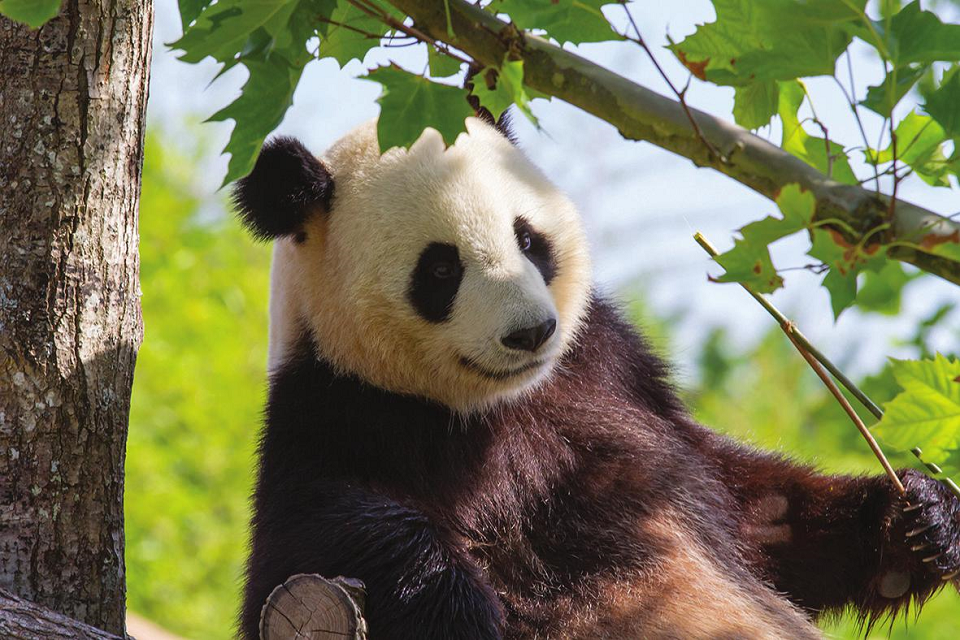THE GIANT PANDA 2
Today, giant pandas are one of the world's most well-known animals. And they are universally recognised as being a charismatic symbol of both China and nature conservation in general.
Like many endangered species, giant pandas have declined as a growing human population has grabbed wild lands for human uses. That problem hasn’t gone away since the species was labelled endangered in 1990. But the Chinese have spent the past quarter of a century perfecting breeding methods.
Giant pandas are masters of adaptation. “We humans are used to changing the environment to suit our needs,” says Zhang Hemin, director of the China Conservation and Research Centre for the Giant Panda. “The difference is that pandas changed themselves to suit the environment.”
Pandas live in a very specific habitat. Because of gaps in the fossil record, exactly when they diverged from other bears isn’t clear. A jaw from Spain puts an early panda relative at 11.6 million years old, while DNA evidence suggests 18 million years old. And bones from a cave in China indicate giant pandas as we know them are at least two million years old.
How many wild pandas are out there? Researchers have been trying to count them since the 1970s, when it is thought there were roughly 2,500 animals. That dropped dramatically in the 1980s, in part because of a periodic natural die-off of bamboo. Normally, pandas can survive such natural ecological events by shifting to more fruitful habitats, but if there’s nowhere to move, they’ll starve.
The Chinese government’s most recent survey, from 2014, reported 1,864 in the wild, 17 percent more than in 2003. But Marc Brody, a National Geographic grantee who founded the conservation non-profit organisation Panda Mountain, warns that it’s not easy to trust any specific figures but that they are getting better at counting them using different techniques. Finding out how many pandas exist in the wild is not an easy task. In fact, it requires a massive effort, with teams of researchers spending many hours trekking through steep, mountainous bamboo forests looking for tell-tale signs.
So why should we save the giant panda? We should do everything we can to save the giant panda because we are the ones that have driven it to the edge of extinction. Besides, pandas also play a crucial role in China's bamboo forests by spreading seeds and helping the vegetation to grow. So by saving pandas, we will also be saving so much more.

